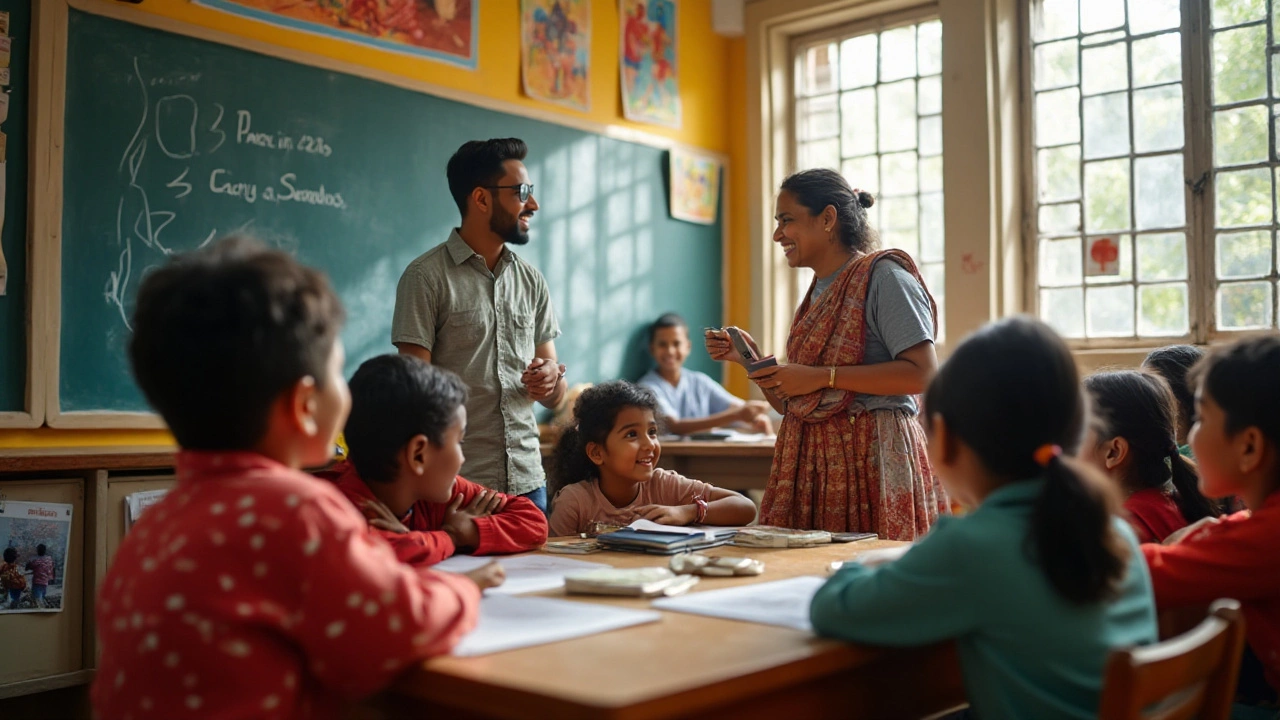Classroom Experience: Simple Ways to Make Learning Work for Everyone
Ever walked into a class and felt the vibe was either buzzing with energy or just flat? That feeling is the classroom experience. It’s not just about the desks and chalkboards – it’s about how students connect, how teachers deliver, and the tools that bridge the gap. Below are down‑to‑earth tricks you can use right now, whether you’re a student trying to stay focused or a teacher looking for fresh ideas.
1. Set Up a Space That Sparks Interaction
Start with the layout. Rows of desks work for exams, but a semi‑circle or clusters encourage discussion. Move a few chairs, add a whiteboard in the middle, and watch conversations flow. Even a simple change like turning off the overhead projector and using a portable screen can shift the energy from passive to active.
Lighting matters too. Natural light reduces eye strain and keeps minds alert. If you can’t get sunlight, switch to warm LEDs. A well‑lit room feels safer and invites participation.
2. Mix Traditional Teaching with Digital Boosts
Tech isn’t a gimmick; it’s a tool. Platforms that support xAPI or other modern e‑learning standards let you track what students actually do, not just what they score. Use quick polls, Kahoot quizzes, or short video snippets to break up long lectures. Students love a 2‑minute video that explains a tricky concept in plain language.
For teachers in training, watching a recorded class and then getting feedback helps cement good habits. It’s like a sports coach reviewing game footage – you see what worked and where you slipped.
Don’t forget low‑tech tricks. A sticky‑note board for anonymous questions lets shy students speak up. Pair work with a clear goal (e.g., explain a concept in 3 minutes) builds confidence and keeps the pace lively.
3. Keep the Conversation Flowing
Ask open‑ended questions that need more than a yes or no. “What would happen if we changed this variable?” pushes students to think critically. When a student answers, follow up with, “What made you think that?” – it validates effort and deepens the discussion.
Feedback should be immediate and specific. Instead of saying, “Good job,” try, “I liked how you linked the theory to a real‑world example.” Concrete praise sticks in the mind and guides future attempts.
4. Use Real‑World Examples to Anchor Concepts
Connect lessons to daily life. A math class can use budgeting for a birthday party; a science session can explore the chemistry of cooking. When students see how topics fit into their world, the classroom turns from a test‑prep zone into a discovery lab.
Invite guest speakers – a local entrepreneur, a doctor, or an artist – to share how what they learned in school matters today. Short, real stories are powerful anchors for abstract ideas.
5. Reflect and Adjust Regularly
At the end of each week, spend five minutes noting what clicked and what didn’t. Ask students for one thing they liked and one they’d change. Use that input to tweak the next lesson. Small, consistent tweaks create a classroom that evolves with its learners.
Remember, a great classroom experience isn’t a one‑off makeover. It’s a habit of listening, experimenting, and adapting. Try one of these ideas today, watch the response, and keep the momentum going. Your class will thank you with higher engagement, better grades, and a lot more smiles.
Nov
28

- by Dhruv Ainsley
- 0 Comments
Exploring the Role of a Teacher Trainee: Essential Duties and Responsibilities
A teacher trainee plays a vital role in the educational process, acting as both a learner and an educator. Their tasks range from assisting experienced teachers to planning lessons and actively engaging with students. The journey involves developing classroom management skills, understanding diverse learning needs, and gaining practical teaching experience. This article delves into the daily activities and challenges faced by teacher trainees and offers tips for making the most of this formative period.